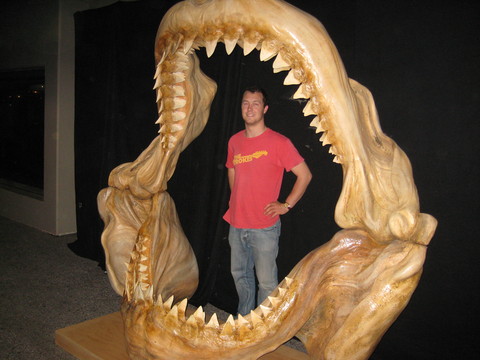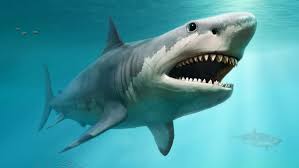Massive megalodon ruled the seas between about 23 million to 2.5 million years ago, as seen in this illustration. Why these giants got so big isn’t known, but may be due to a combination of warm-bloodedness, readily available large prey — and cannibalization in the womb, new research suggests.
Written content from Carolyn Gramling | Science News
The ancient sea terror may have grown to 14 meters thanks to a firstborn’s predatory practice
The largest sharks ever to hunt in Earth’s oceans may have gotten so big thanks to their predatory behavior in the womb, scientists report October 5 in Historical Biology.
The idea emerged from a study that first analyzed the sizes and shapes of modern and ancient shark teeth, using those data to estimate body sizes of the fish. Paleobiologist Kenshu Shimada of DePaul University in Chicago and colleagues focused on an order of sharks called lamniformes, of which only about 15 species still exist today, including fierce, fast great white and mako sharks as well as filter-feeding basking sharks.
Well over 200 lamniform species existed in the past, some of them quite large, Shimada says. But none is thought to have rivaled Otodus megalodon, commonly called megalodon, which lived between about 23 million and 2.5 million years ago. Determining just how giant these creatures were is challenging, though, because sharks’ skeletons are made of cartilage, not bone, and little remains of now-extinct species but their teeth. However, those teeth are abundant in the fossil record: A single shark can shed tens of thousands of teeth in its lifetime.

Shimada and his colleagues found that the height of megalodon’s tooth crowns was an extreme outlier among their data, suggesting a total body length of at least 14 meters, twice as long as any other shark that isn’t a filter feeder. But four other extinct species of lamniforms exhibited “gigantism,” growing to over six meters long — not megalodon-scale, but still quite large, Shimada says. Gigantism also occurs in several modern species, including great white, mako and thresher sharks.
The study “gives a broad overview on the relationships between tooth, jaw and body size in an important number of lamniform fossil lineages,” says Humberto Férron, a paleobiologist at the University of Bristol in England.
Yet why megalodon and its relatives could get so big remains unclear. The extinct and modern lamniform species that can grow to these sizes also all happen to be warm-blooded. Regulating body temperature enables them to swim faster and catch more energetic prey. So warm-bloodedness, or endothermy, may be one key to their gigantism. Read more from Science News
Read other science and related stories from News Without Politics





